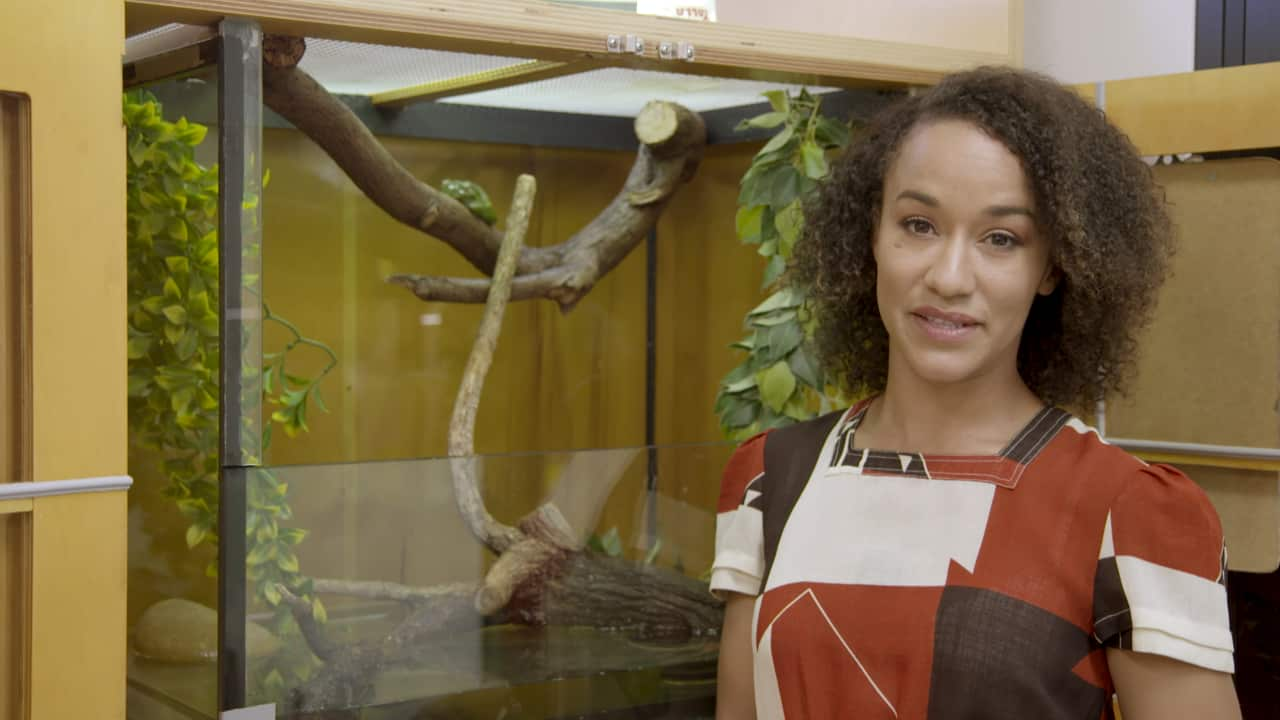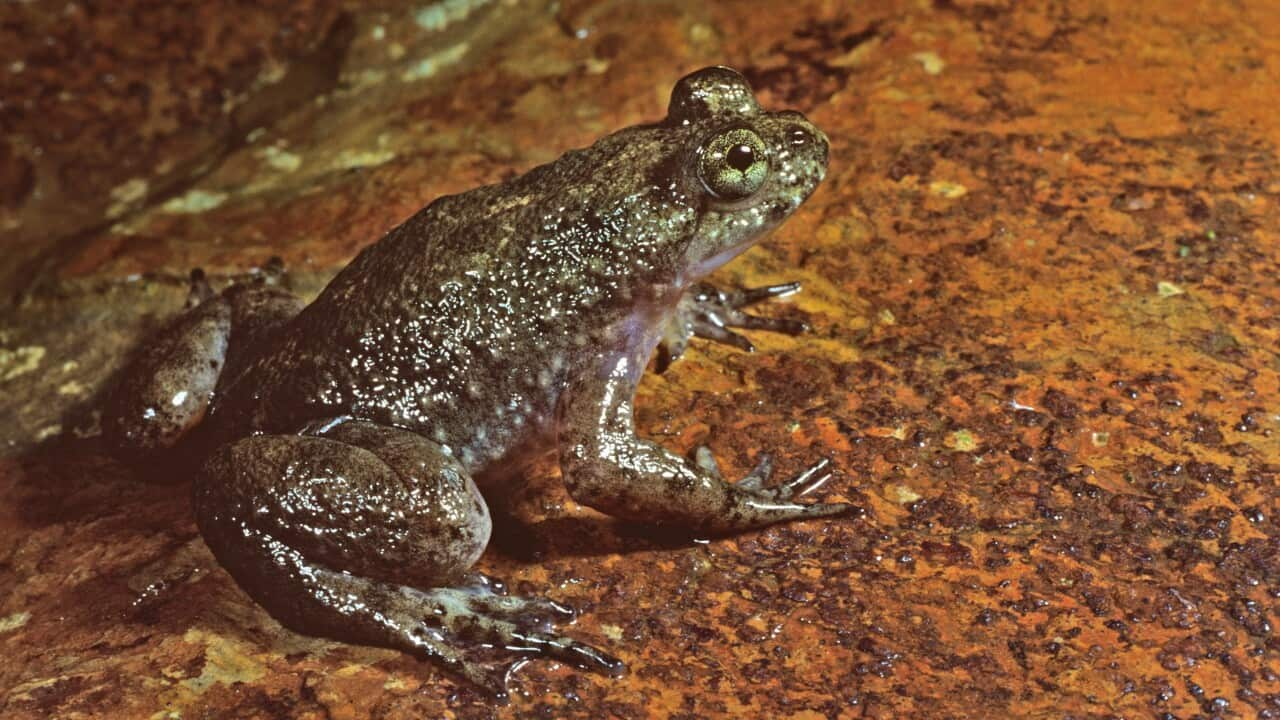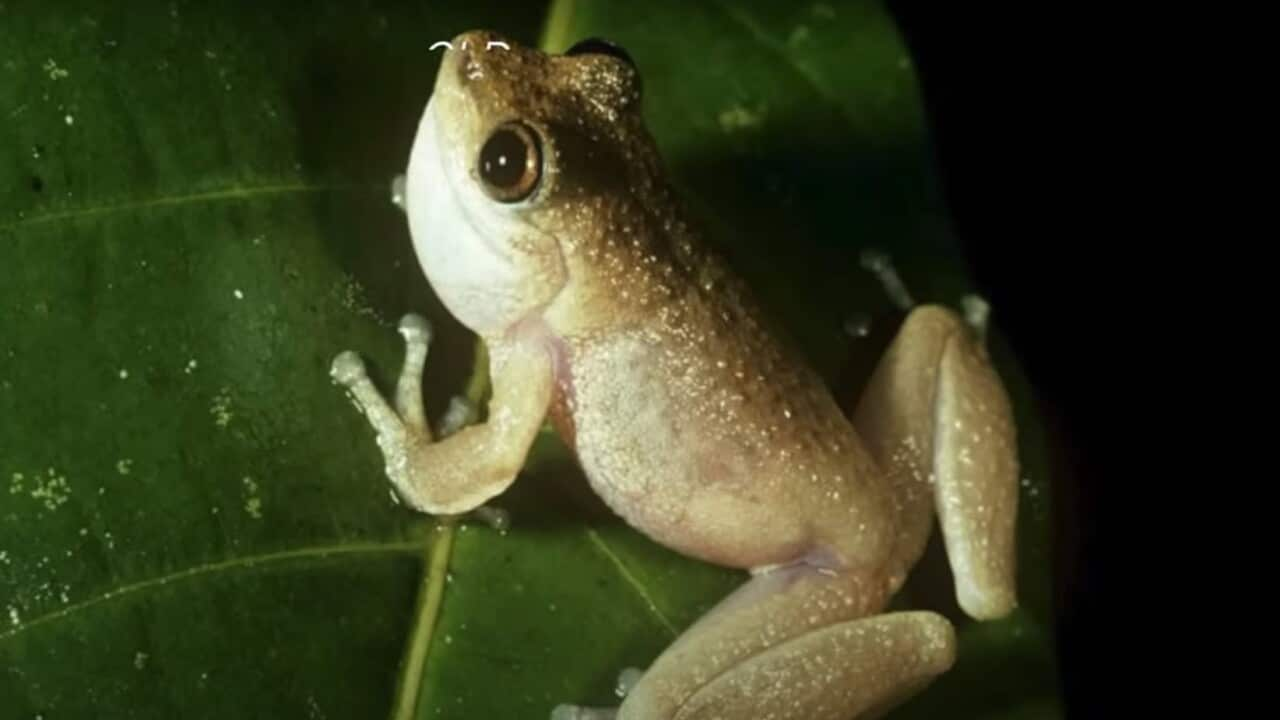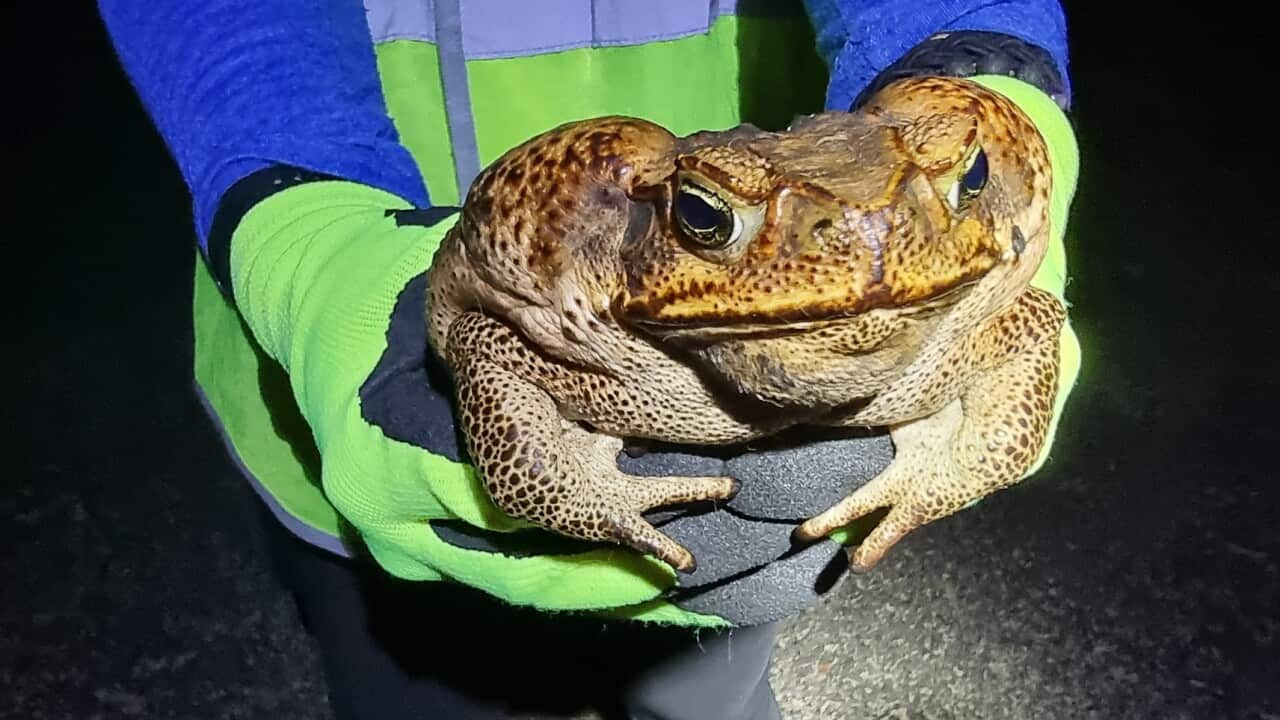Australia is at risk of losing 20 per cent of its frogs to climate change and other threats and the global picture is even worse.
A landmark assessment has found 41 per cent of the world's amphibians including frogs, toads and salamanders are at risk of extinction.
In Australia, it's only half that. Even so, one in five frog species could disappear from native ecosystems in the coming years.
The analysis involved more than 1,000 international scientists and follows an initial assessment in 2004, which alerted the world to the amphibian crisis.
James Cook University Associate Professor Conrad Hoskin contributed to the latest work and says there's no doubt extinction is gaining pace.
Direct comparisons are difficult given the second assessment builds on the work of the first and 2,286 of the 8,011 species in the newest report were assessed for the first time.
But the trends are clear.
READ MORE

What's killing our frogs?
Over the past 20 years, more than 300 species have moved closer to extinction, into more highly threatened categories of a red list compiled by the International Union for Conservation of Nature.
And climate change is a key, emerging threat compounding the longer-standing menaces of habitat loss and disease.
In 1980 there were 23 documented amphibian extinctions around the world. Another 10 were added by 2004 and four more last year, for a total of 37.
That might not sound a lot but the bar is high when it comes to proving a species has been lost.
Actual extinctions could be as many as 222, given there are another 185 species with no known surviving population.
Five Australian species are among the 37 declared gone forever, including Queensland's northern and southern gastric-brooding frogs - extraordinary creatures that would swallow fertilised eggs to keep them safe before vomiting up live young when the time was right.

A combination of climate change, habitat destruction, pollution, the deadly chytrid amphibian pathogen, and the introduction of invasive trout has resulted in precipitous declines of water frog species in Bolivia, Ecuador and Peru. Source: AAP / Robin Moore/Global Wildlife Conservation/PA/Alamy
Hoskin believes they're extinct and there's little that can be done but there are many others that need urgent help, especially critically endangered frogs living on tropical mountain tops.
They used to be cool places of refuge but are rapidly warming. Every degree of extra heat forces frogs higher and soon there'll be nowhere left to go.
LISTEN TO

'Shocking' report reveals massive impacts of climate change on Australia's environment
SBS News
04:34
The biologist says the mountain-top nursery frog epitomises the risk. It lives only on Mount Lewis, west of Port Douglas, in Queensland's far north.
"It's only found above 1200 metres elevation on a mountain that only goes to about 1350 metres. It's just pinned right up on top of the highest ridge now.
"I would suggest it probably gets the grim title of the species most likely to extinct from climate change in the next years."
With less than 1000 individuals left, no captive breeding program in place and an increasing number of heatwaves affecting the region, his pessimism seems justified.
But he also says it's not too late for that frog and others.
"Captive breeding for frogs can take a decade to sort out the methodology. We certainly need to be doing now. In fact we needed it yesterday."
LISTEN TO

Climate change may cause mass extinctions, new report shows
SBS Greek
03:47
Janice Chanson, who has helped coordinate the two amphibian assessments, says there's still time for the federal government to meet its commitment to prevent new extinctions.
She warns another long-lasting drought might be enough to rob some endangered species of the streams they need to breed or bushfires could fill those streams with ash and that could be the nail in the coffin.
"Australia is very good at documenting extinctions and not necessarily doing anything to stop them."



